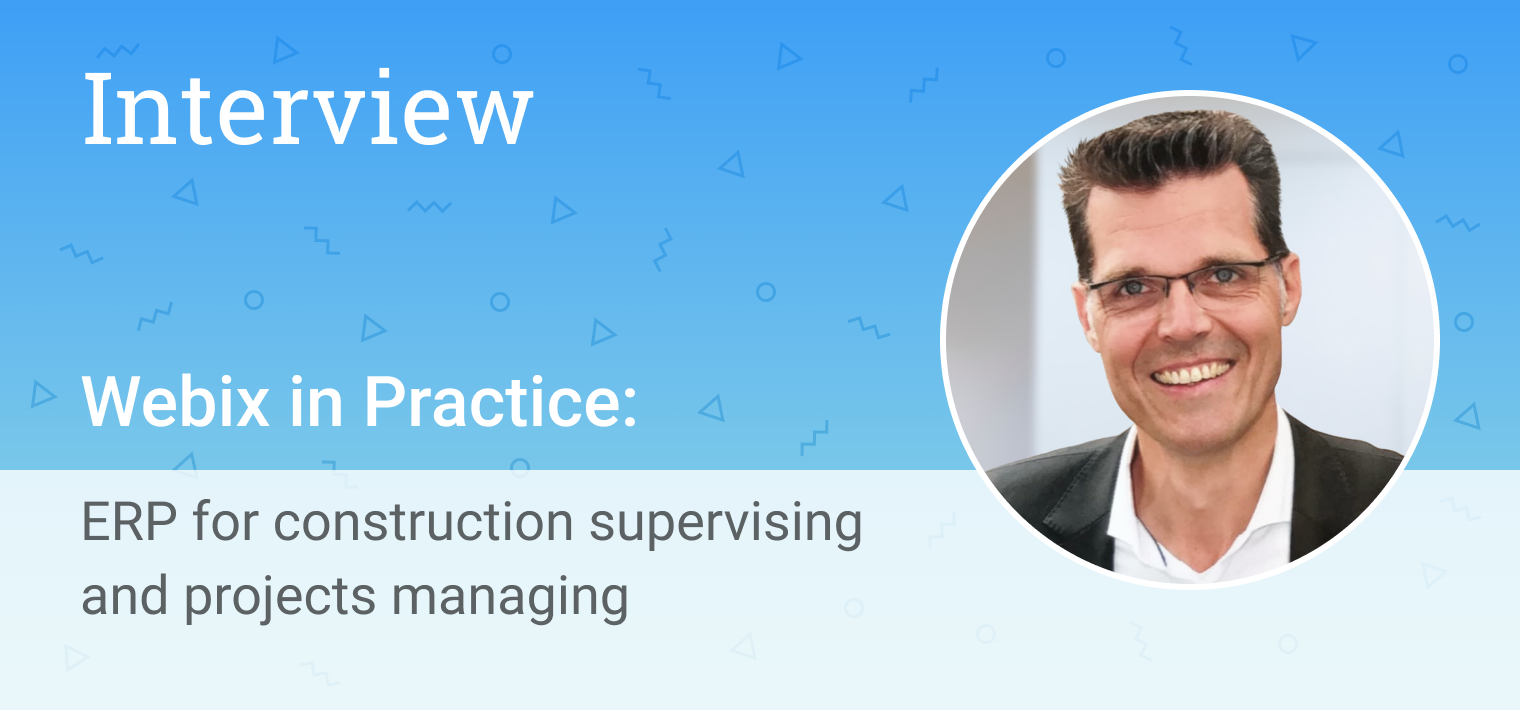We continue interviewing Webix users on how our products help them implement their ideas.
Today we have a talk with Bernd Gewehr. He is the head of the IT department at Vössing Engineering. As a leading engineering firm in consultancy, planning, project management and construction supervision, Vössing has been implementing infrastructure projects of every scale for 40 years. With over 600 employees at 20 locations in Germany and abroad, Vössing plans and designs national and international projects, from concept all the way through to implementation.
We are impressed to know that such a giant is using our software and hence excited to learn their experience.

To begin with could you tell us a little about yourself and your company?
I started my career back in 1997. Our company is in the civil engineering business. There are technicians, engineers, technical constructors who work on civil engineering projects like highways, bridges, tunnels or railway stations. We do not deal with the construction itself. Instead, we are planning, supervising and managing the projects. As far as I know, there are only a few companies in Germany comparable to ours regarding headcount and revenue.
I’m the head of the central IT department, a core team of 10 people working in Düsseldorf and one IT support engineer at each of our branch sites. We focus on digitalizing the processes in the company by developing a customized digital workplace.
Sounds impressive! Could you give us a bit more details about what your department is dealing with?
Well, thinking like engineers means we claim to know how things should be. Unfortunately, when we look at the ERP systems on the market, we feel that this is not how things should be done for us. That is why we don’t own any of the classical ERP or CRM systems.
Our IT department creates our own apps for our business, 100% customized to our needs. Nobody knows our business better than us, so we are building our own customized apps that follow our own methodology of project acquisition and management, customer relations management, or project references.
It is important for our business to have a tool that can easily pick one out of 10000 projects by smart filtering and print a beautiful one pager as a project reference for the next tender process. None of the ERP vendors has something like that. Just to give one example.
The second challenge we are dealing with is collaborative solutions. Obviously, nobody builds a bridge on his own. So collaboration is the key to our business. We can collaborate with 10 or even 20 companies, with up to 100 people dealing with one project for years. Unfortunately, there is not much to choose from in the digital workplace software when it comes to cross-company collaboration. The complexity of cross-company large project collaboration is one of the least supported features on the market.
For instance, let’s take the project of building a bridge. There are usually thousands of PDFs written, approved and communicated over a lot of channels on this project. This leads us to endless folders of information in the file system. The steps performed with those documents are recurrent, and we try to make it a business process. We step in and use our software development skills to create smart solutions to those real business problems. Actually, our software team is rather small. We have only four or five developers depending on the workload.
Those niches are the ones that nobody seems to care about and that’s where we work. We deploy our own software solutions for our users and also integrate with those from others.
How did you come up with an idea of using Webix?
We have been developing software for over 20 years already. We’re good at business processes and we have the right tools to develop business process apps. But we realized we needed improvements in how to present those apps to our users. We had a very functional technical design, which was usable, but still far from what is called a good user experience. So we started looking for something like Webix. We came across some of the Webix widgets that really impressed us and showed how we wanted our product to look like. We finally decided to change our UIs from handcrafted web interfaces into Webix UIs with the same backend technology. That allows us to create good-looking web UIs quickly and to fulfill our users requirements for usability and prettiness.
What are the examples of the most challenging tasks you’ve dealt with while developing your own ERP system?
I will pick one where we recently used Webix. We are used to doing our internal accounts payable invoice process all on paper. That is our history and it worked perfectly. Later we taught our Xerox machines to scan invoices right. You put the paper on the top, press the button and the digital invoice process starts with digitizing the paper to a PDF. The PDF runs into a software that we wrote with a Webix UI. Now we’ve got the unprocessed invoice list on the left, the PDF of the selected invoice in the middle and the form to fulfill the steps for invoice approval on the right. Easy to create, easy to use.
Another one is a supply chain tool to order our workplace machines from our preferred supplier. We have built it as a complete end-to-end business process and we have made a tool for it with the Webix UI that is used by users in all involved companies. We use the Webix Kanban board widget for that. The approved order for the new device creates a new card in the board moving from left to right along the process, from order to production, to delivery, to operation.
You can look through my posts on Twitter and see how we use Webix in our software.

Pic. form Bernd’s twitter feed
Do you integrate Webix into any parts of your core business of engineering?
Yes, as one example, we used the Webix file manager widget. You can also see that on my Twitter feed.
We created a new HCL Connections community widget based on Webix file manager. It shows the content of an internal network drive folder to internal and external community members. You can share a network drive location inside your HCL Connections project community where you can invite external guests for collaboration.
But it is not purely sharing a folder but also caring for other processes that happen with the content. It helps to collaborate on the content on our file servers. Also, we use the connections communities to invite foreign people to work with us directly on our business processes.

Pic. form Bernd’s twitter feed
Do you have any other widgets on your mind Webix could help you with?
One thing we urgently need right now is the Webix User Manager widget. I should say that Webix User Manager combined with Kanban for processes and Document Manager is a strong combination that can work really well.
Have you experienced any difficulties using Webix?
Well, first of all I should say that if there is a question, it is usually answered within 1-2 days with support or even in the webix community. That is really cool!
The thing I would like to change is the necessity to create a specific UI for mobile devices. The Webix position is to create a specific UI design for different platforms. It seems to me it should be done easier. I have to create multiple UIs. It would be okay though if I didn’t have to spend much time caring for them. Every change must be done in several UIs, which is hurtful. I would prefer to have a UI capable of being used fully responsively. Today, there is no grid component in Webix that acts like a bootstrap grid. The table does not know how to break columns into rows when the screen gets smaller. These things could be standard within Webix. I would like to have standard components that adapt to the place they get. This is one of the most important points for me. You can look through the comments on my Twitter account.
One more point is that Webix does not have a calendar view widget. I have to create a calendar from scratch. I mean a simple calendar view where I can load and create events.
All in all, Webix has helped us to change the way we create solutions. Robust backend technologies like the HCL Domino web- and database server can still be used while the frontend development happens in pure HTML and javascript with Webix components. That was a big step forward for us.



